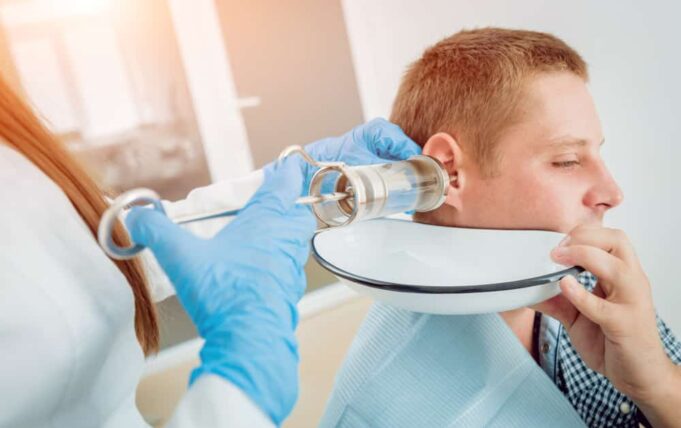Earwax, also known as cerumen, is a natural substance produced by our bodies to protect, lubricate, and clean our ears. However, when earwax accumulates and becomes impacted, it can lead to discomfort, hearing loss, and even infection. One common method of removing excessive or impacted earwax is ear syringing, a procedure performed by healthcare professionals. But is it painful to have your ears syringed? In this blog post, we will explore the process of ear syringing, address common misconceptions, and discuss potential risks and alternatives.
Understanding the Ear Syringing Process
Ear syringing is a procedure performed by healthcare professionals to remove excess or impacted earwax using a syringe filled with water or saline solution. Before the procedure, the healthcare professional will examine your ear to ensure that ear syringing is appropriate and safe for your situation. Here’s a step-by-step breakdown of the process:
Softening the Earwax: In preparation for the procedure, you may be asked to use earwax softening drops for a few days leading up to your appointment. These drops help to break up and soften the impacted earwax, making it easier to remove.
Flushing the Ear Canal: During the ear syringing procedure, the healthcare professional will gently pull your outer ear up and back to straighten the ear canal. They will then insert the nozzle of the syringe into your ear and slowly push the plunger, flushing the ear canal with water or saline solution. This process helps to dislodge and flush out the impacted earwax.
Removing the Earwax: As the earwax becomes dislodged, it will be flushed out of the ear canal by the water or saline solution. The healthcare professional may use a small basin or towel to catch the liquid and earwax as it exits the ear.
Is Ear Syringing Painful?
For most people, ear syringing is not a painful procedure. It may cause some mild discomfort, a sensation of fullness in the ear, and possibly a temporary change in hearing due to the water or saline solution in the ear canal. However, these sensations should subside once the procedure is completed and the ear is dried.
If you experience significant pain during the procedure, it is essential to inform the healthcare professional immediately, as this may indicate an underlying issue or complication.
Potential Risks and Alternatives to Ear Syringing
While ear syringing is generally considered safe for most people, there are some potential risks and complications to be aware of, including:
Ear Infection: The introduction of water or saline solution into the ear canal can, in rare cases, lead to infection. To minimize this risk, it is essential to follow the healthcare professional’s aftercare instructions.
Perforated Eardrum: Although uncommon, there is a risk of perforating the eardrum during the ear syringing process. This can occur if the nozzle of the syringe is inserted too far into the ear canal or if excessive force is used.
Tinnitus or Vertigo: Some individuals may experience temporary tinnitus (ringing in the ears) or vertigo (dizziness) following the procedure. These symptoms should resolve on their own within a short period of time.
If you are concerned about the risks associated with ear syringing, there are alternative methods for earwax removal, such as microsuction and manual removal using specialized tools. Consult with your healthcare professional to determine the best method for your individual needs.
Conclusion
In most cases, ear syringing is not a painful procedure. Although it may cause some mild discomfort and temporary sensations in the ear, these side effects are generally short-lived and well-tolerated. That said, it is essential to have the procedure performed by a qualified healthcare professional to minimize potential risks and ensure a safe and effective earwax removal process.












